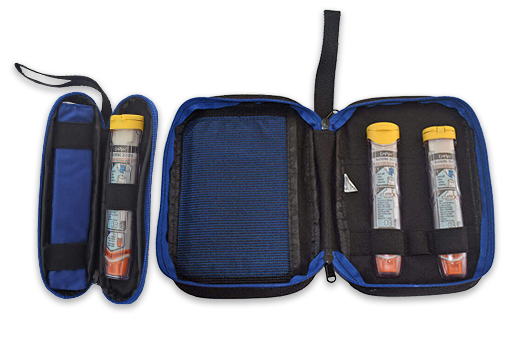Myth 1: Small amounts of nut are harmless
Ever wonder why packaged foods with no nuts in the ingredients sometimes contain a warning that they may contain nuts or that they are produced in a facility that also processes nuts? For some people, tiny amounts of nut (or allergen) can cause a severe allergic reaction, also known as anaphylaxis.1
Myth 2: Antihistamines should be used before EpiPen®
The fact is that antihistamines should never be used as an alternative to EpiPen®.2
Myth 3: If there’s no skin reaction, it’s not anaphylaxis
The fact is that people may have no visible skin reaction (rash, hives or itching) while experiencing anaphylaxis.3
For people who have been prescribed EpiPen®, it is important to use it at the first sign of a severe allergic reaction.4
Signs and symptoms vary, but may include one or more of the following:
- Persistent dizziness or collapse.
- Difficult or noisy breathing.
- Wheezing or persistent cough.
- Swelling, especially of the face, lips, tongue or throat.
- Vomiting, diarrhoea and stomach cramps.
- Young child becoming pale and floppy.
- Skin rash, hives or itching.2
Myth 4: Adrenaline is dangerous
EpiPen® or EpiPen® Jr. Auto-Injectors contain a specific dose of adrenaline and are designed for use by people who have had no first-aid training.5
The fact is that it is safer to use EpiPen® when you don’t actually need it than not to use it when you do need it. Not administering EpiPen® in a potentially life-threatening situation is more dangerous than using EpiPen® when a patient is experiencing only a moderate allergic reaction.5
There are instructions on the EpiPen® Auto-Injector to guide you.
Remember:
Blue to the sky. Orange to the Thigh.
Watch the How To Use EpiPen® video now
(English version)
Also translated in 25 other languages.
























